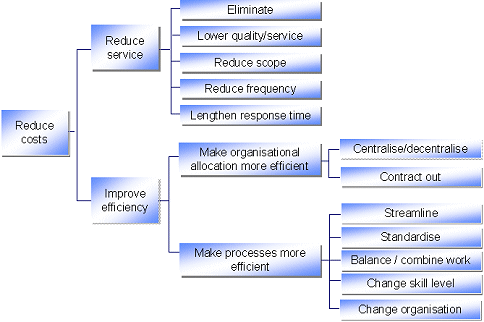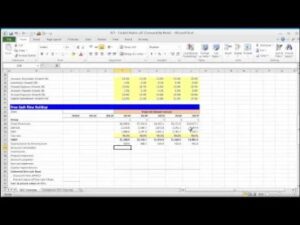
The rate differs depending on where your business operates, so you’ll be looking at your state’s tax requirements and federal tax owed. A financial professional will offer guidance based on the information provided and offer a no-obligation call to better understand your situation. Our mission is to empower readers with the most factual and reliable financial information possible to help them make informed decisions for their individual needs. The articles and research support materials available on this site are educational and are not intended to be investment or tax advice. All such information is provided solely for convenience purposes only and all users thereof should be guided accordingly. This is because lenders want to know the ability of the company to generate revenue and profit, as well as its capacity to repay the loan.
They are mostly made from one-time non-business activities that might not re-occur in the future. For instance, these could be assets accrued from the sale of land or an old vehicle. It is a statement prepared by companies that operate globally offering a wide range of products and services and consequently incurring an array of expenses.
Foreign Currency Accounting for Small Businesses
- The rate differs depending on where your business operates, so you’ll be looking at your state’s tax requirements and federal tax owed.
- An income statement is a financial statement that lays out a company’s revenue, expenses, gains, and losses during a set accounting period.
- General expenses may include operational business costs like rent, salary, utilities, supplies, and non-operational costs such as marketing campaigns, debt payments, and equipment upgrades.
- Lastly, your net earnings—also called net income or profits—reflect your final income after all expenses and taxes have been deducted.
Horizontal analysis makes financial data and reporting consistent per generally accepted accounting principles (GAAP). It improves the review of a company’s consistency over time, as well as its growth compared to competitors. It shows you how much money flowed into and out of your business over a certain period of time. The income statement may have minor variations between different companies, as expenses and income will be dependent on the type of operations or business conducted. However, there are several generic line items that are commonly seen in any income statement.

Cost of goods sold
With 7.433 billion outstanding shares for Microsoft, its basic EPS came to $11.86 per share ($88.1 billion ÷ 7.433 billion). Join over 2 million professionals who advanced their finance careers with 365. Learn from instructors who have worked at Morgan Stanley, HSBC, PwC, and Coca-Cola and master accounting, financial analysis, investment everything you need to know about the income statement banking, financial modeling, and more. A balance sheet shows you how much you have (assets), how much you owe (liabilities), and how much is remains (equity).
Step #3: Calculate your total revenue
It’s a snapshot of your whole business as it stands at a specific point in time. How you calculate this figure will depend on whether or not you do cash or accrual accounting and how your company recognizes revenue, especially if you’re just calculating revenue for a single month. After deducting all the above expenses, we finally arrive at the first subtotal on the income statement, Operating Income (also known as EBIT or Earnings Before Interest and Taxes). It is common for companies to split out interest expense and interest income as a separate line item in the income statement. Depreciation and amortization are non-cash expenses that are created by accountants to spread out the cost of capital assets such as Property, Plant, and Equipment (PP&E). Most businesses have some expenses related to selling goods and/or services.
Finally, using the drivers and assumptions prepared in the previous step, forecast future values for all the line items within the income statement. For example, for future gross profit, it is better to forecast COGS and revenue and subtract them from each other, rather than to forecast future gross profit directly. The other two important financial statements are the balance sheet and cash flow statement. Income statements provide a summary of the performance of a company during a specific accounting period and are useful for various stakeholders like management, investors, lenders, and creditors. Non-operating expenses are the costs from activities not related to a company’s core business operations.
Losses can be the result of one-time or any other extraordinary expenses, or lawsuit expenses. Examples of gains are proceeds from the disposal of assets, and interest income. It starts with the top-line item which is the sales revenue amounting to $90,000. The illustration above comprehensively shows the different levels of profitability of XYZ Corporation.
Used in both managerial and financial accounting, it is an finding dory and parenting a child with sensory processing disorder invaluable resource to internal and external stakeholders alike. Because of how complex the operations involved in a multi-step income statement are, operating revenues and operating expenses are separated from non-operating expenses and revenues. Moreover, Losses and Gains are not usually recorded as such in this kind of statement but fall under one of the above categories.
Multi-step income statements separate operational revenues and expenses from non-operating ones. They’re a little more complicated but can be useful to get a understanding income before tax on an income statement better picture of how core business activities are driving profits. The income statement is one of the three important financial statements used for reporting a company’s financial performance over a set accounting period. The other two key statements are the balance sheet and the cash flow statement. Income statements, also called profit and loss or P&L statements, are one of the most important financial statements for tracking your company’s revenue and growth. Public companies are required to issue an income statement, along with the balance sheet and cash flow statement, every quarter.
Operating expenses are basically the selling, general, and administrative costs, depreciation, and amortization of assets. It also helps business owners determine whether they can generate high profit by increasing prices, decreasing costs, or both. Income statements can be prepared monthly, quarterly, or annually, depending on your reporting needs.